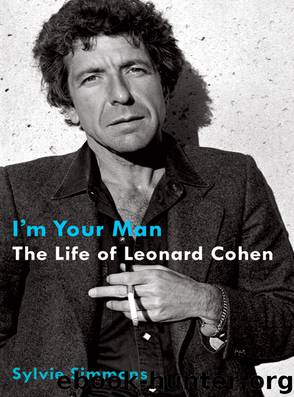I'm Your Man by Sylvie Simmons

Author:Sylvie Simmons
Language: eng
Format: epub
Publisher: HarperCollins
Published: 2012-08-31T16:00:00+00:00
Fifteen
I Love You, Leonard
Phil Spector was thirty-six years old, five years younger than Leonard, a small, fastidious man with bright eyes and a receding hairline and chin. In matters of dress Spector favored bespoke suits and ruffled shirts, or sometimes a cape and wig. Between them they reflected his status as “the first Tycoon of Teen” (as Tom Wolfe dubbed him) and, for many years, the Emperor of Pop. Spector had been nineteen years old when he wrote and recorded his first No. 1 in 1958, a song called “To Know Him Is to Love Him,” its title taken from the words on his father’s tombstone. In 1960 Spector became a record producer, then the head of his own record label. During the first half of the sixties he turned out more than two dozen hits.
There had been record producers before Phil Spector but there was nobody like him. Other producers worked behind the scenes; Spector was up front, flamboyant, eccentric and more famous than many of the acts whom he recorded. His records were “Phil Spector” records, the artists and musicians merely bricks in his celebrated “Wall of Sound”—the name that was given to Spector’s epic production style. It required battalions of musicians all playing at the same time—horns bleeding into drums bleeding into strings bleeding into guitars—magnified through tape echo. With this technique Spector transformed pop ballads and R & B songs, like “Be My Baby,” “Da Doo Ron Ron” and “Unchained Melody” into dense, clamorous, delirious minisymphonies that captured in two and a half exquisite minutes the joy and pain of teenage love.
Leonard was not a teenager. It is quite possible he never was a teenager. Leonard’s songs, like his poetry, were a grown-up’s songs. His lyrics were sophisticated and his melodies uncluttered, which gave his words room to breathe and resonate. His delivery was plain and his taste in production, as in most everything else, was subtle and understated. Other than finding themselves the last two left at a key party, it is hard to picture Leonard Cohen and Phil Spector ever ending up as musical bedfellows. But by the grace of Marty Machat they did. Machat’s logic was simple. He had a client—Spector—who was one of the best-known names in American pop, but who had hit a rough patch and was about to lose them a lot of money if he didn’t give Warner Bros. an album soon. And he had another client—Leonard—who was revered almost everywhere but America, who was cowriting songs with a producer far less celebrated than Spector—Lissauer—and whose last album with Leonard did nothing to get him onto the U.S. charts. Spector had seen Leonard play at the Troubadour and told Machat he had been “entranced.” Leonard had confessed to being a fan of Spector’s early records, considering them “so expressive I wouldn’t mind being his Bernie Taupin.”1 So why not put them together and have Leonard do the lyrics and Spector the music? It would solve the Spector problem, and perhaps even Leonard’s problem too.
Download
This site does not store any files on its server. We only index and link to content provided by other sites. Please contact the content providers to delete copyright contents if any and email us, we'll remove relevant links or contents immediately.
Cecilia; Or, Memoirs of an Heiress — Volume 3 by Fanny Burney(31758)
Cecilia; Or, Memoirs of an Heiress — Volume 2 by Fanny Burney(31725)
Fanny Burney by Claire Harman(26490)
We're Going to Need More Wine by Gabrielle Union(18911)
Plagued by Fire by Paul Hendrickson(17298)
All the Missing Girls by Megan Miranda(15415)
Cat's cradle by Kurt Vonnegut(15112)
Bombshells: Glamour Girls of a Lifetime by Sullivan Steve(13933)
Leonardo da Vinci by Walter Isaacson(13114)
For the Love of Europe by Rick Steves(12381)
4 3 2 1: A Novel by Paul Auster(12233)
Adultolescence by Gabbie Hanna(8789)
The remains of the day by Kazuo Ishiguro(8759)
Note to Self by Connor Franta(7592)
Diary of a Player by Brad Paisley(7422)
Giovanni's Room by James Baldwin(7123)
What Does This Button Do? by Bruce Dickinson(6107)
Ego Is the Enemy by Ryan Holiday(5236)
Born a Crime by Trevor Noah(5220)
